Future island
Robot boats, flying cars, and laser-shooting drones—the future is already being tested on Osaka’s Yumeshima, site of the 2025 Expo. Ili Saarinen reports
Originally developed as a waste disposal site, Yumeshima—a 390-hectare artificial island in Osaka Bay—is being reimagined as the futuristic home of Expo 2025 Osaka Kansai. The organizers plan to start constructing the Expo venues in the summer of 2022, but in the meantime, the expanse of vacant land is being put to good use testing experimental technology from eco-friendly cooling materials to robots and flying cars.
The experiments are being conducted by nine companies and consortiums selected through an open proposal process. They’re being supported by the Osaka city and prefectural governments, the Osaka Chamber of Commerce and Industry, and the Japan Association for the 2025 World Exposition. By turning Yumeshima and its surroundings into a testing ground for cutting-edge tech, the organizers are hoping to spark innovation, build momentum in the lead-up to Expo 2025, and provide a sneak peek into the exciting future that will be on full display at the big event three years down the road.
Six of the nine experiments are already underway, and the entire enterprise is set to be completed by the end of 2022. While the organizers are not getting ahead of themselves, telling Unlock there are no guarantees the technology being tested will actually be used at the Expo, chances are visitors will be able to spot at least some of the following inventions in action on Yumeshima in 2025.
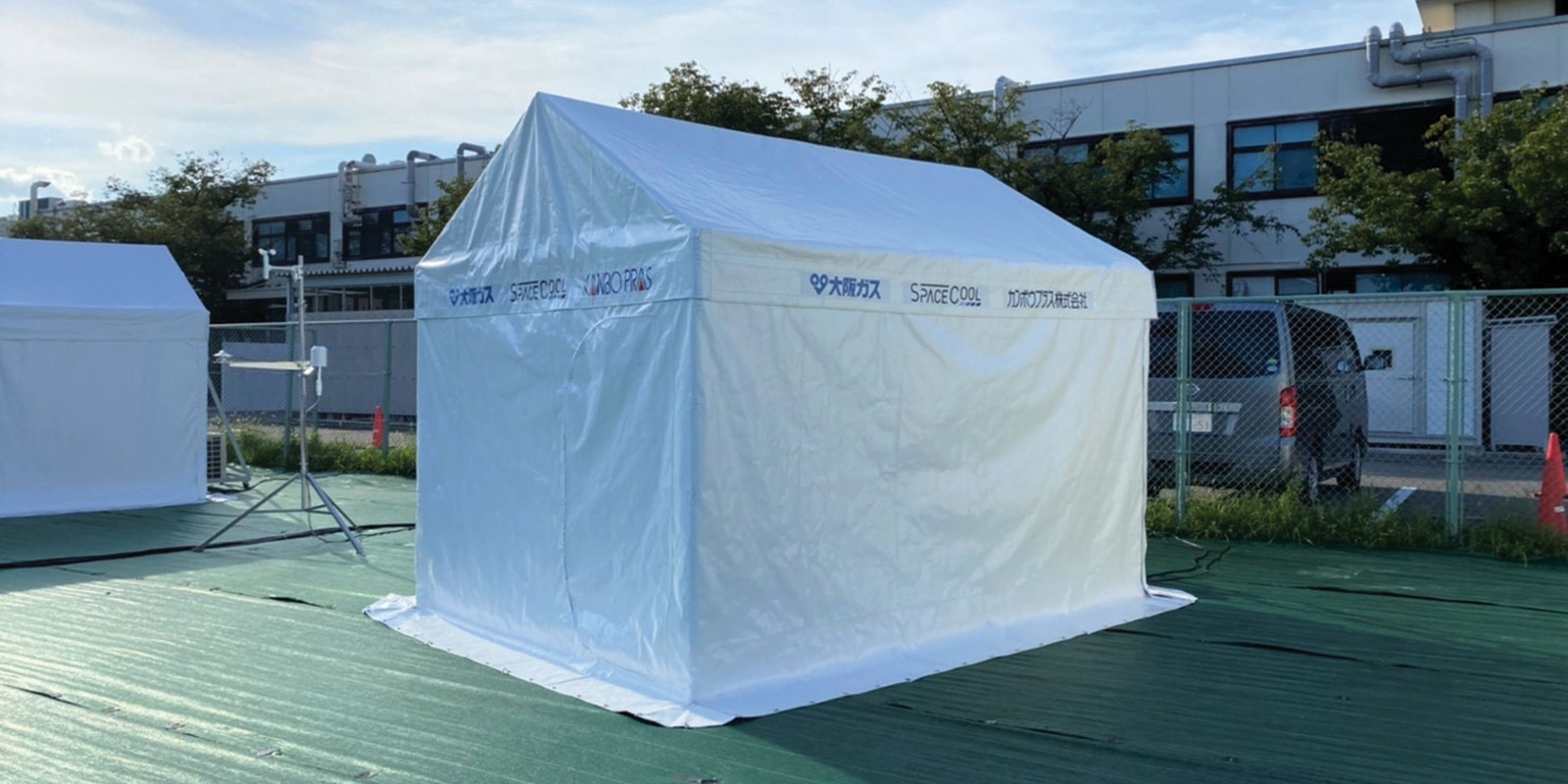 Osaka Gas Co.
Osaka Gas Co.
1. Spacecool
Osaka Gas Co.
The first of the nine experiments to launch on Yumeshima tested the properties and potential of Spacecool, a film-like material that uses radiative cooling technology to mitigate heat without the use of electricity. Results from the test show that the interiors of buildings, containers, and vehicles coated with Spacecool can be expected to stay comfortably crisp even at the height of summer, with the material achieving a cooling effect of up to six degrees Celsius. Even better, the infrared wavelengths emitted by Spacecool release heat directly into space, rather than having it remain in the atmosphere and contribute to global warming.
2. Green Infrastructure
Sumitomo Forestry Co.
Not all of the solutions being tested on Yumeshima feature futuristic equipment. The Green Infrastructure experiment centers on planting 14 species of trees and other plants in the windswept environment of Osaka Bay and examining which of them prove the most resistant against the elements. The results are expected to influence the design of green spaces on the waterfront as well as elsewhere in Osaka, hopefully helping the city deal with salt damage to plants and reduce the number of trees toppled during the annual typhoon season.
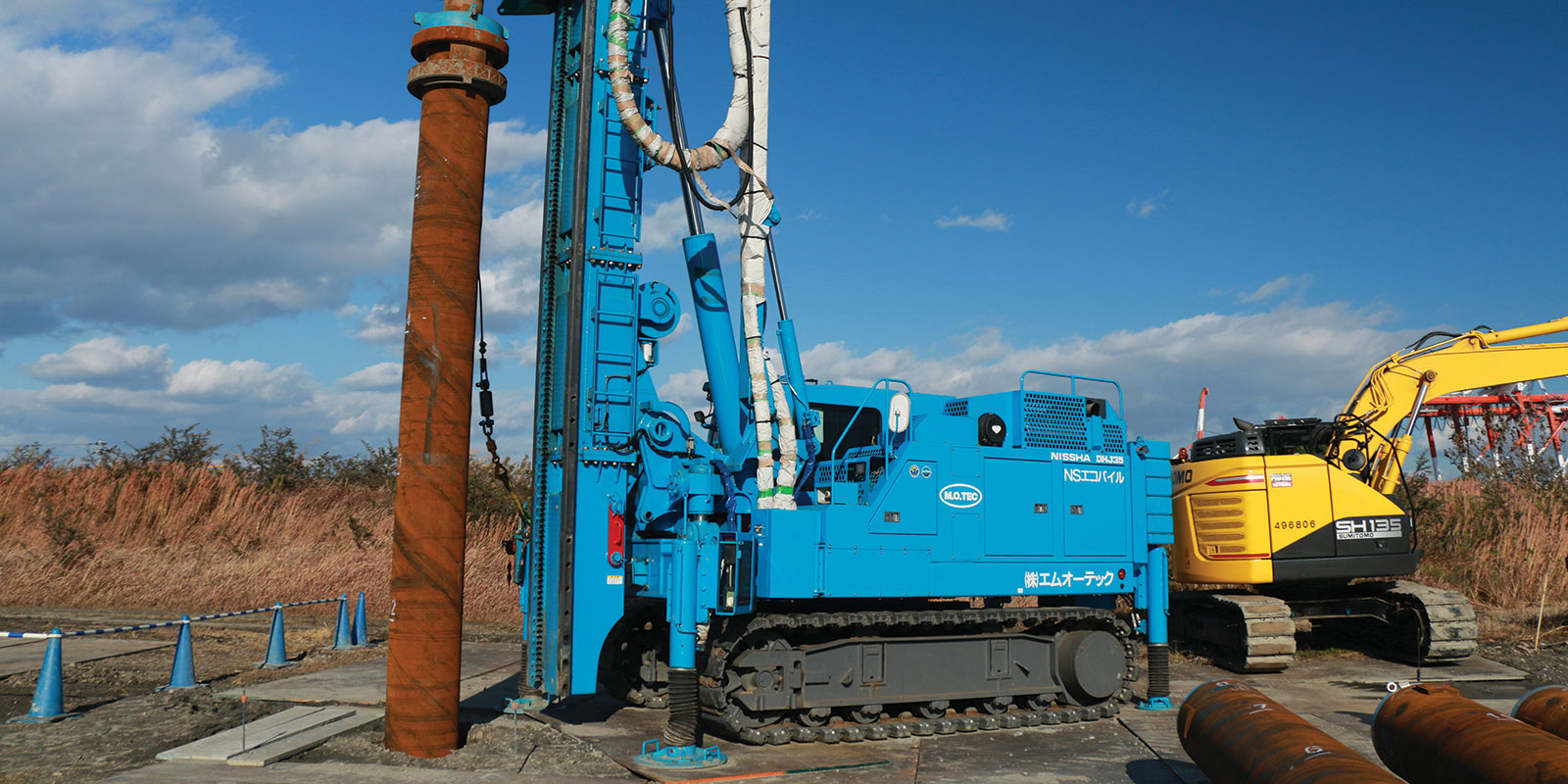 Nippon Steel Corp.
Nippon Steel Corp.
3. Ground Reinforcement
Nippon Steel Corp.
When heavy structures like high-rises are built on reclaimed land, they must be supported by piles long enough to reach hard ground. This experiment tests the suitability of Nippon Steel’s cutting-edge Eco-Piles in unreinforced soil. Some of the piles will be left in the ground for an extended period of time, and once removed will be studied to assess the viability of pile reuse and recycling. Nippon Steel is also testing calcia-modified soil, a mixture of steelmaking slag and dredged soil, to see whether it could be helpful in reinforcing the ground further.
4. Umidoko Robot
Takenaka Corp.
The Umidoko Robot is a small, square ferryboat that travels on its own using location data from the Quasi-Zenith Satellite System aka Michibiki, a next-generation satellite navigation system developed by Japan. The vessel’s designers are aiming for it to become a new form of leisurely transportation for Osaka’s many waterways, while larger versions of the Umidoko Robot could be used for gigs and other types of entertainment in which performers move across the water during the show.
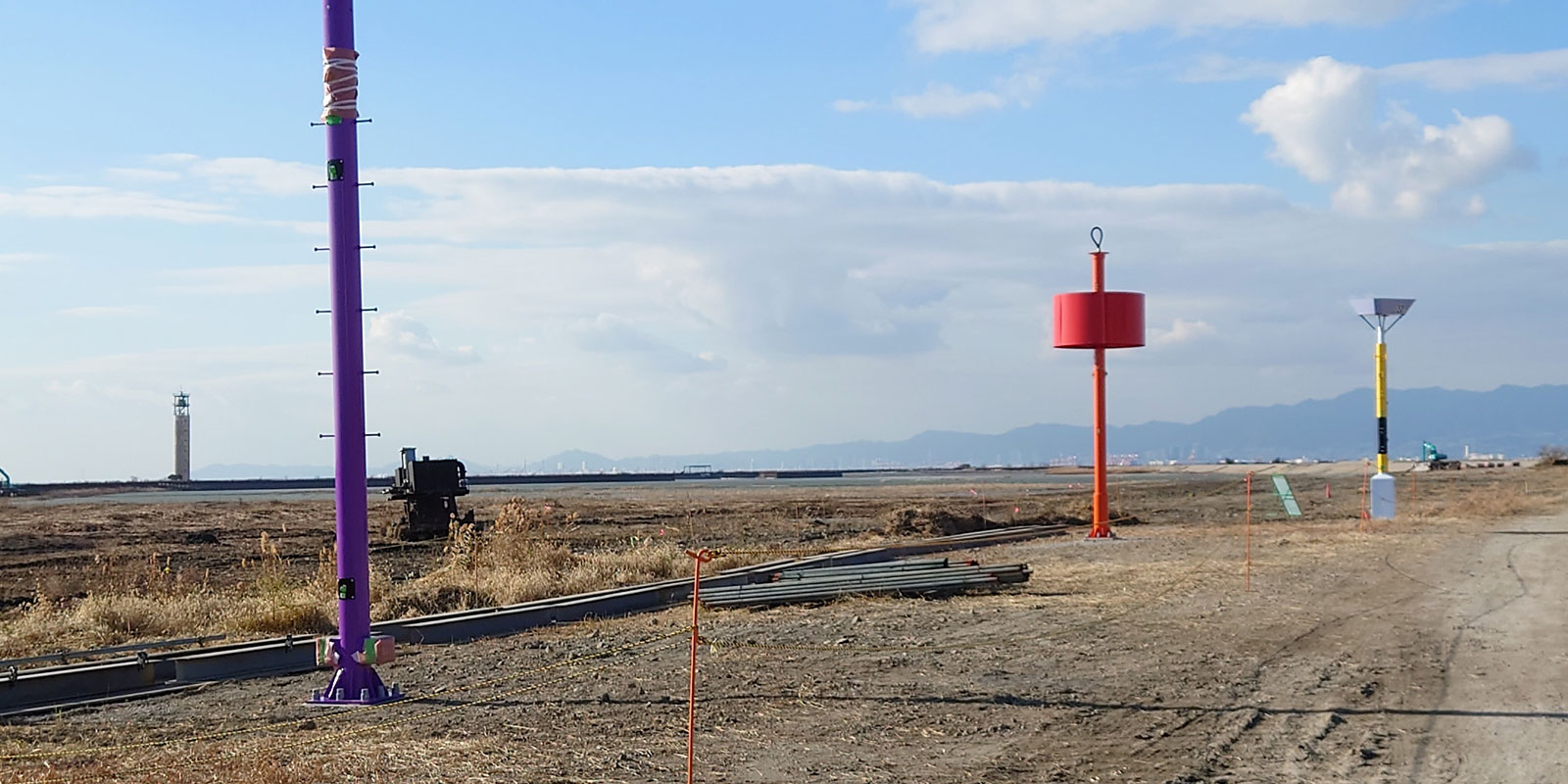 Kansai Electric Power Co.
Kansai Electric Power Co.
5. Smart Poles
Kansai Electric Power Co.
Kansai Electric’s next-generation utility poles are much more than just wire hangers. In fact, the power lines they’re connected to are all underground, while the actual posts can be mounted with equipment such as solar panels, surveillance cameras, drone ports, and wireless chargers for mobile devices. While there isn’t yet much on Yumeshima for the test poles to surveil, the manufacturer hopes that, when installed in crowded places such as the Expo venue, a network of “smart poles” with cameras could prove helpful in doing things like locating lost children.
6. Next-Generation Urban Mobility Solutions
Osaka Metro
The most ambitious and probably the most complex of the nine experiments, this test of a system of self-driving buses involves everything from a ride-hailing app to underground coils for the remote charging of electric vehicles. Set to begin in March 2022 on a purpose-built circuit designed to simulate the Expo 2025 venue, though on a much smaller scale, Next-Generation Urban Mobility Solutions will feature level 4 autonomous driving, i.e. fully self-driving vehicles within a limited area, perhaps providing a preview of the transportation experience Expo attendees will be able to enjoy.
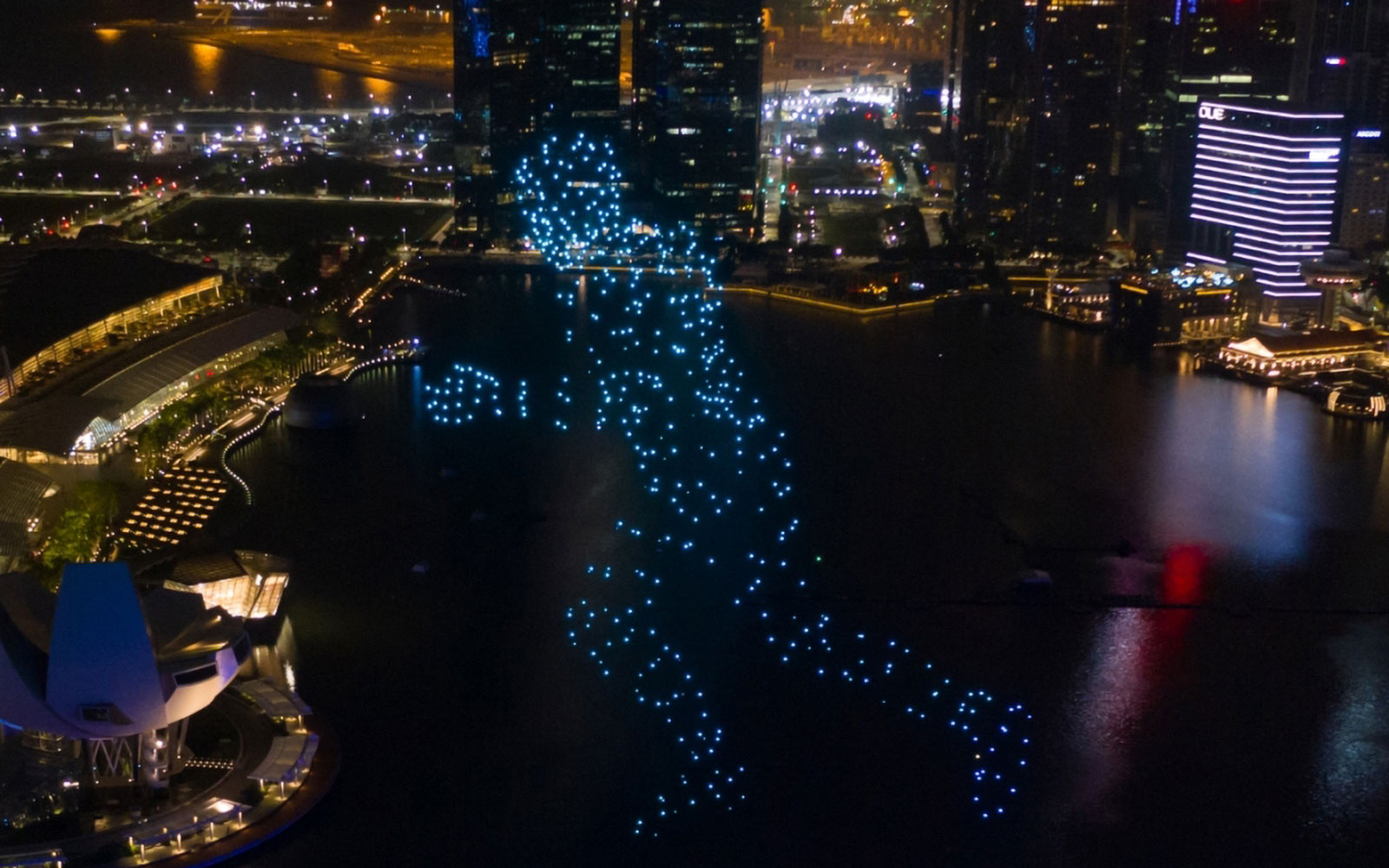 7sense Inc.
7sense Inc.
7. Drone Entertainment & Advertising Experiment
7sense Inc.
The jaw-dropping drone show, in which more than 1,800 synchronized mini-aircraft formed shapes including the Olympic logo and planet Earth in the sky above the Japan National Stadium, was one of the most memorable parts of the Tokyo 2020 Olympics opening ceremony. This experiment seeks to build on that success through test runs of intricate drone formations in the windy conditions of Yumeshima, perhaps with the hope of astonishing the world again in 2025.
8. Laser and Drone Signage System
Osaka University, Institute of Laser Engineering
Guidance signs can be difficult to spot in crowded spaces, and even more so in stressful situations such as an emergency. Like something straight out of a sci-fi movie, this system seeks to solve the problem with drones that spray water vapor into the air, producing a temporary “canvas” onto which laser patterns can then be projected to set up signage anywhere in seconds, guiding people to shelters or exits. We wouldn’t be surprised to see drone-drawn signs playing a role in advertising and entertainment before long either.
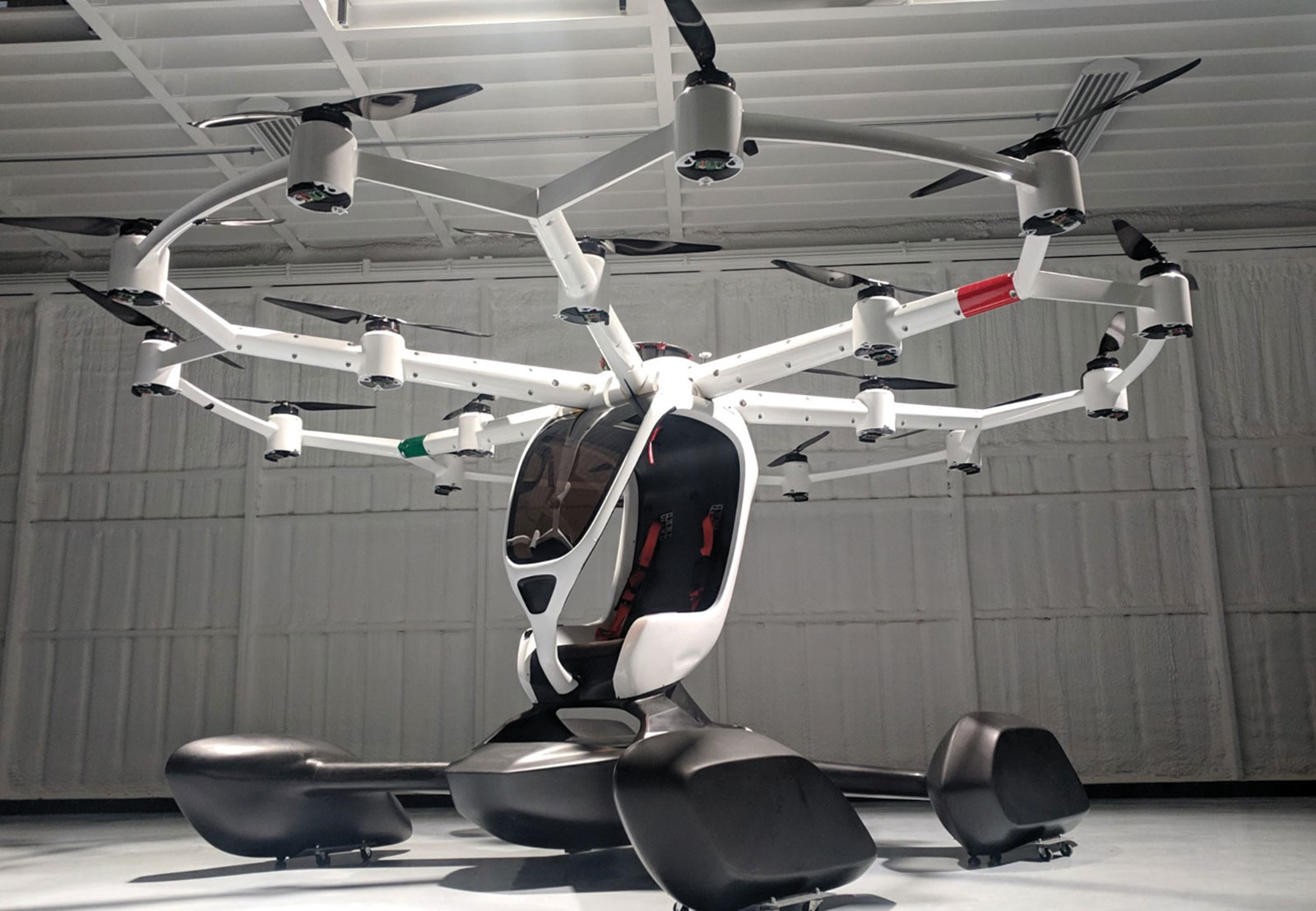 Lift Aircraft
Lift Aircraft
9. Experience the Sky
Lift Aircraft
Manufactured by American company Lift, the Hexa is a lightweight, single-passenger aircraft that looks something like a large drone. It’s just about the closest thing there is to a flying car right now, and it’s already being tested across the U.S., where anyone can try flying the Hexa after receiving the requisite training—no pilot’s license required. The Yumeshima test will be the Hexa’s first appearance in Japan, and a positive result would mark one step toward clearing the various legal and practical hurdles that still stand in the way of cars taking to the sky.